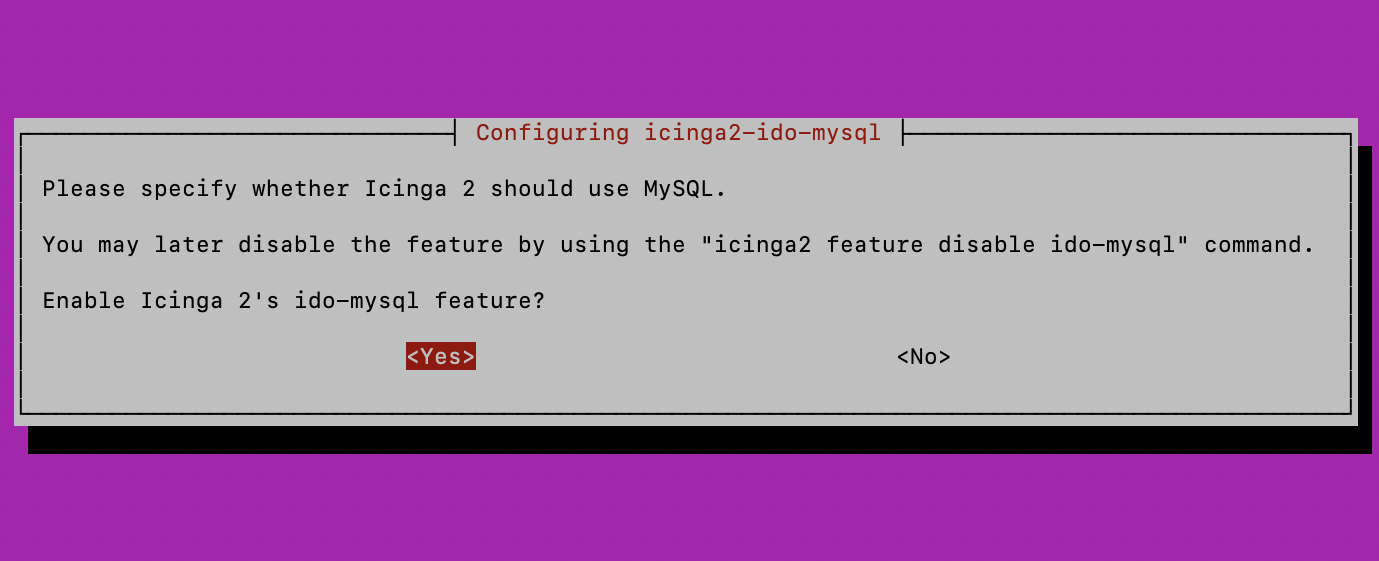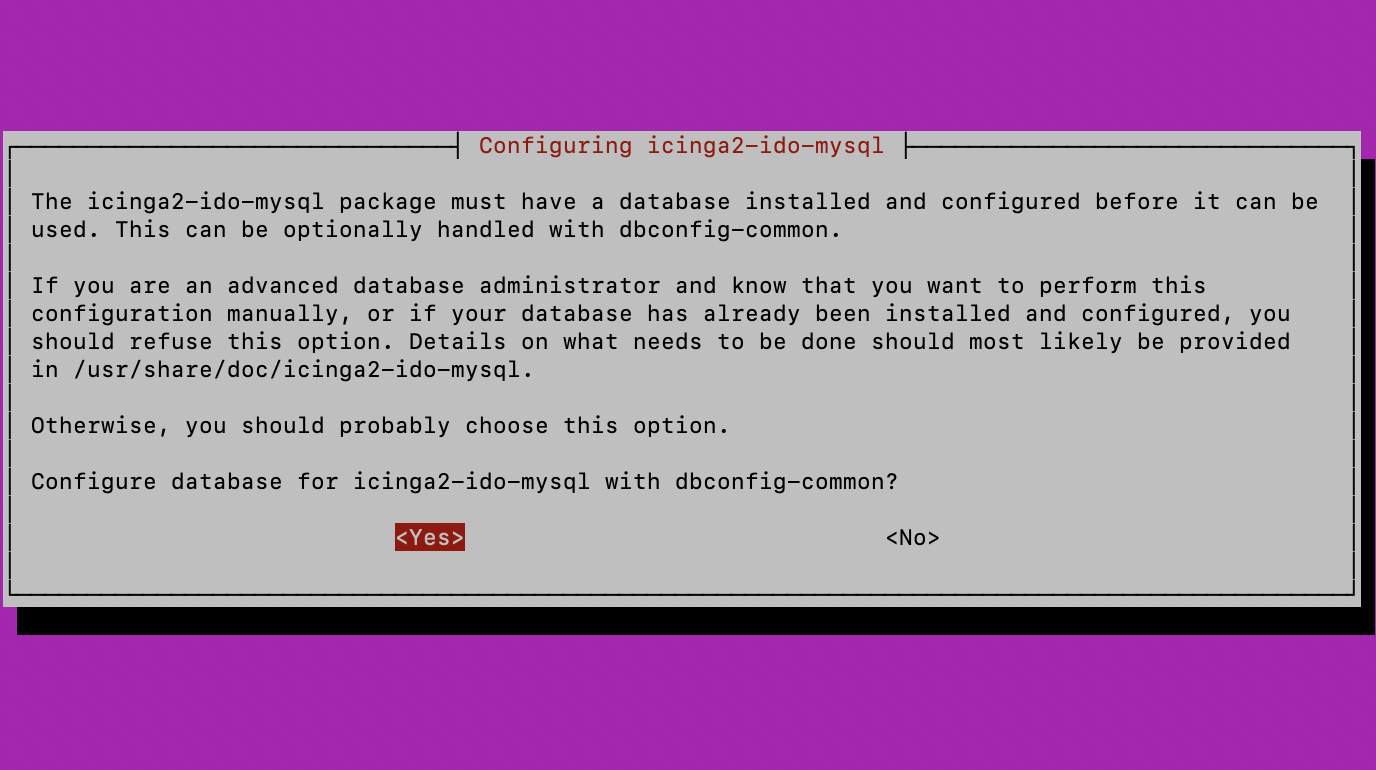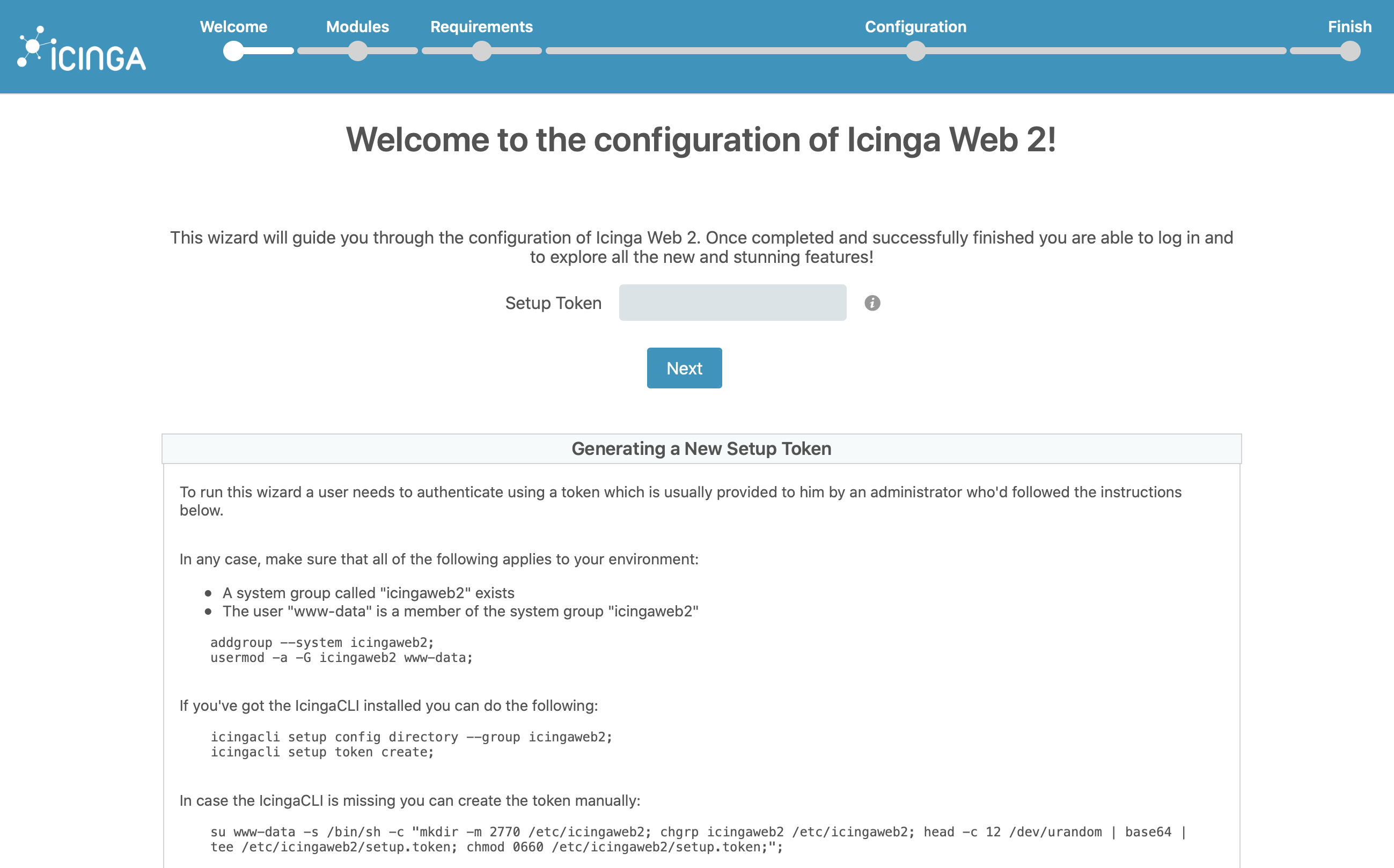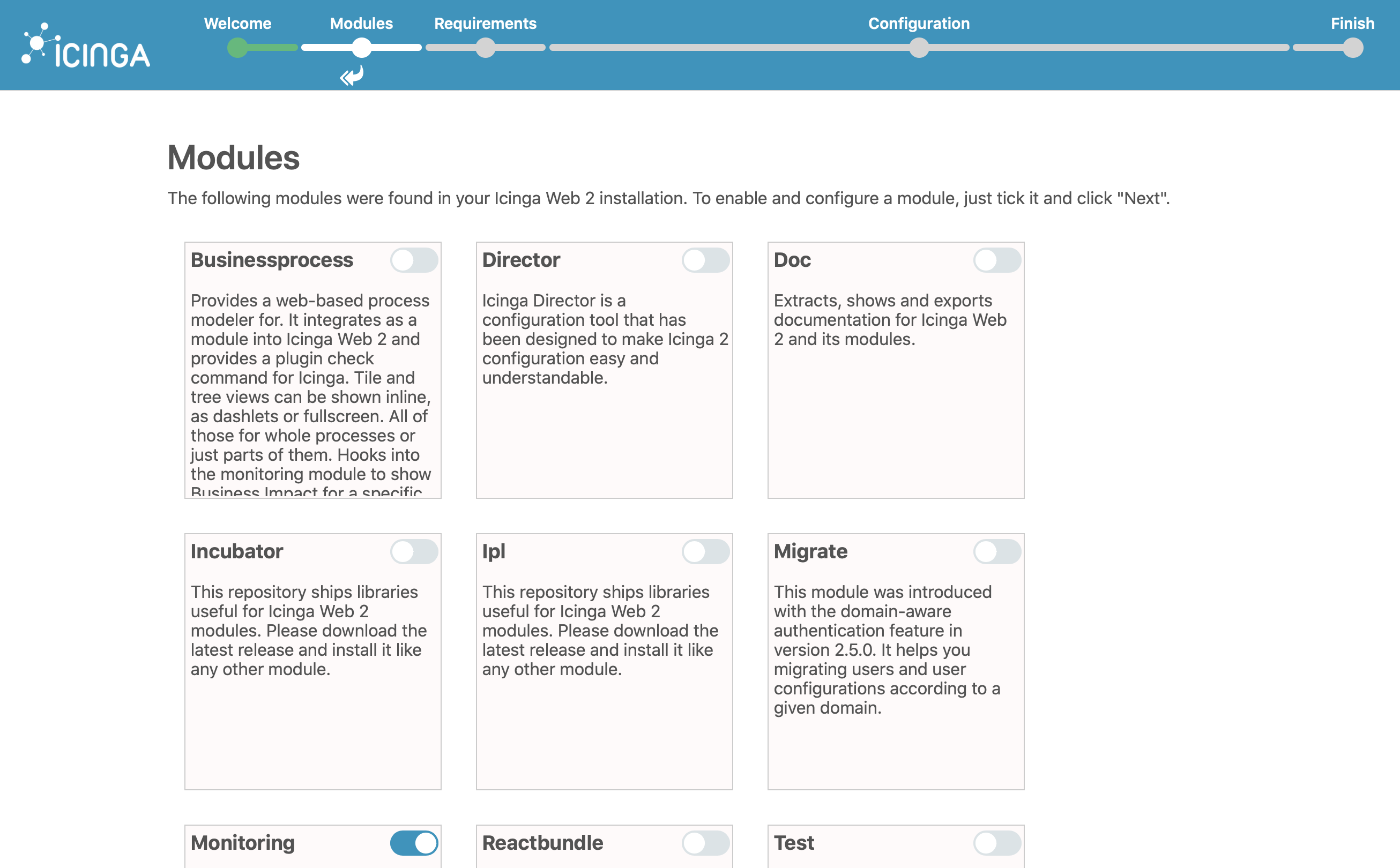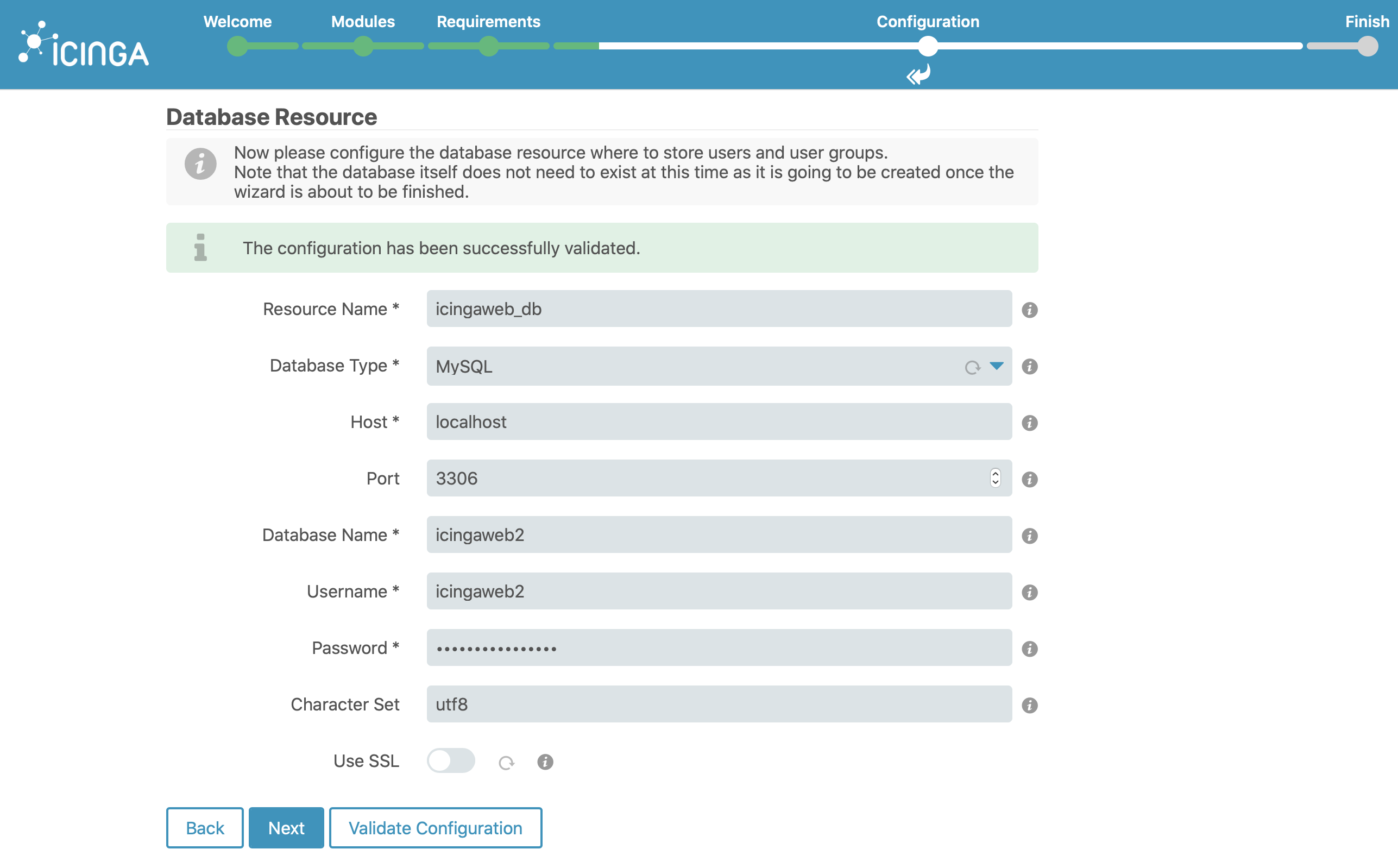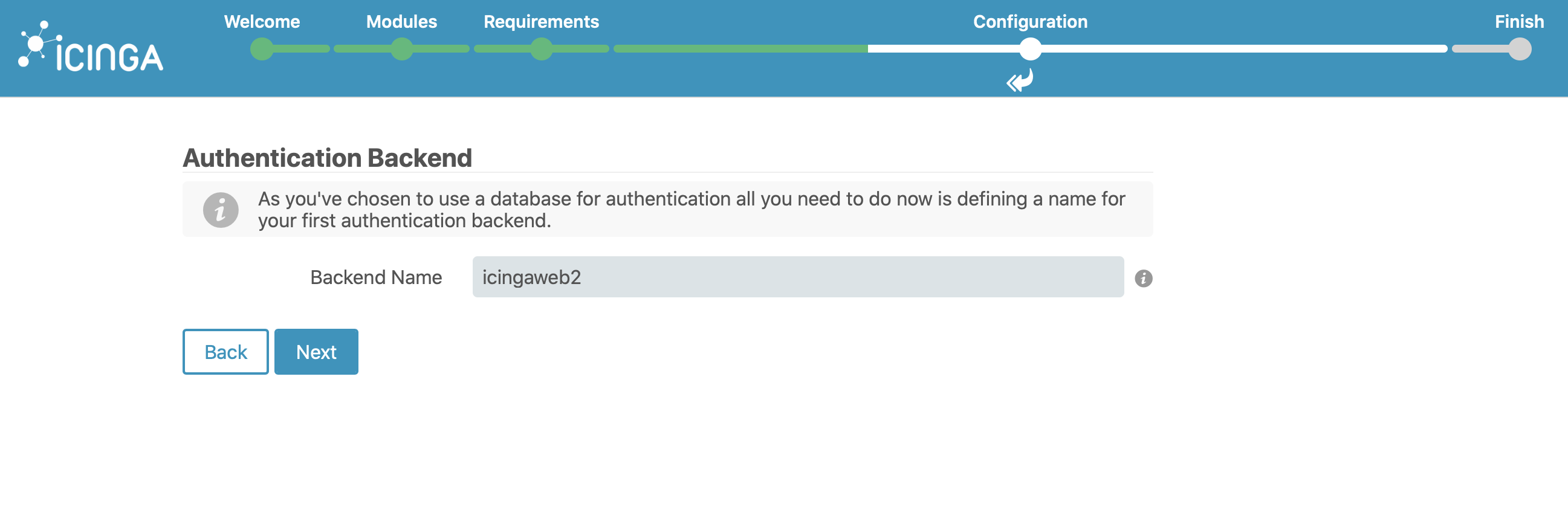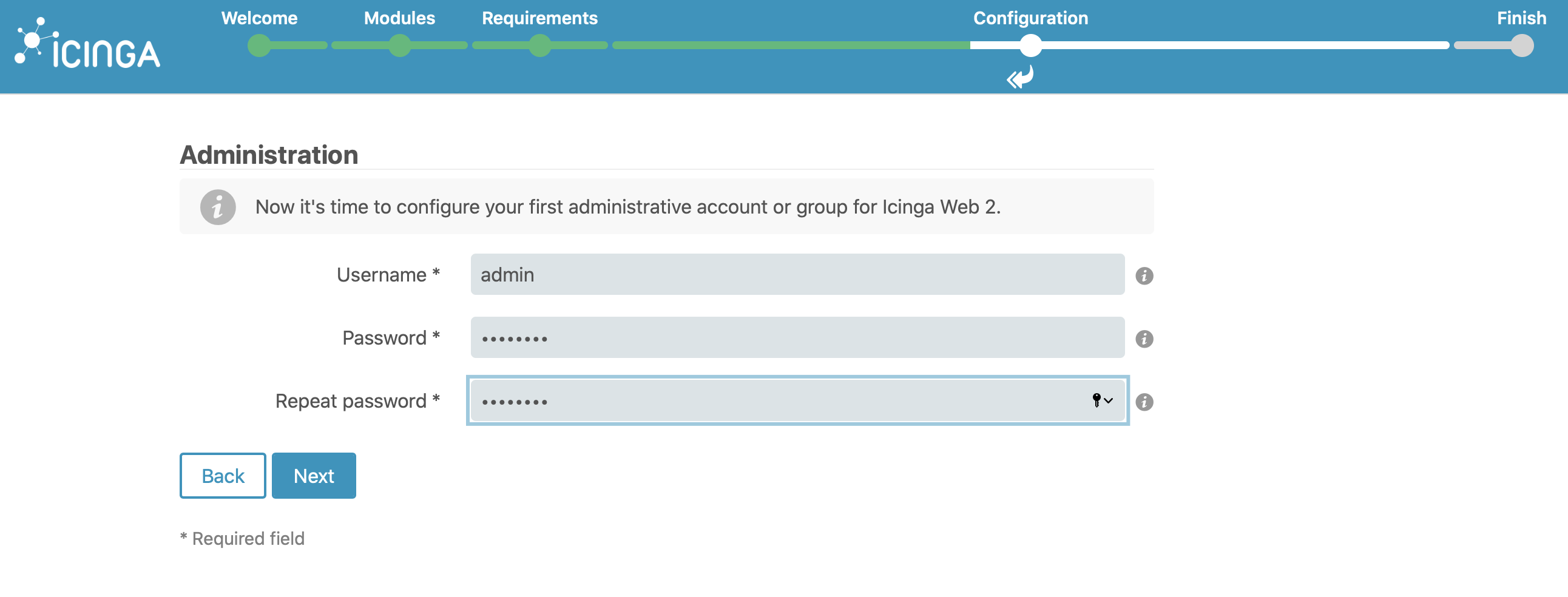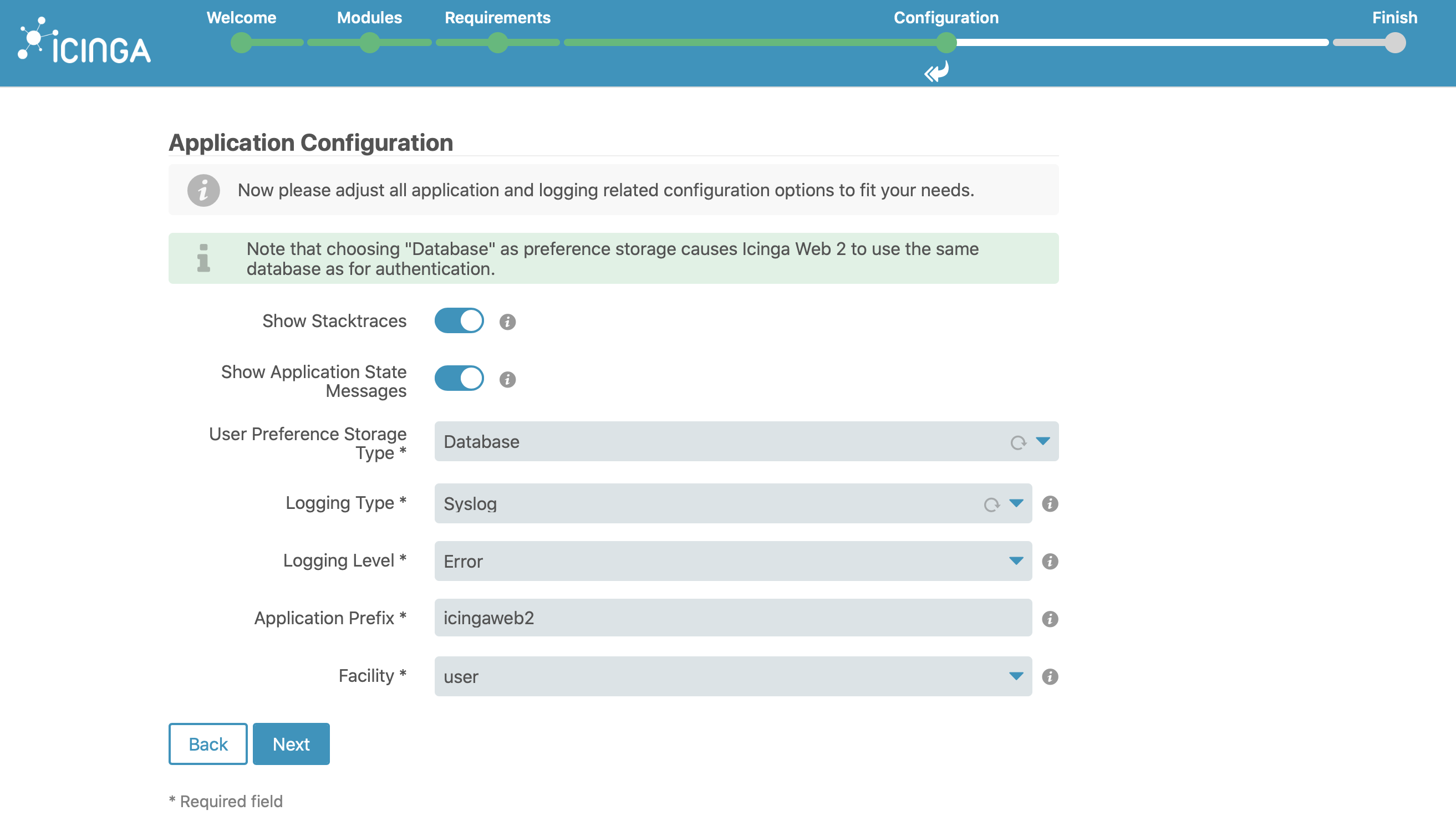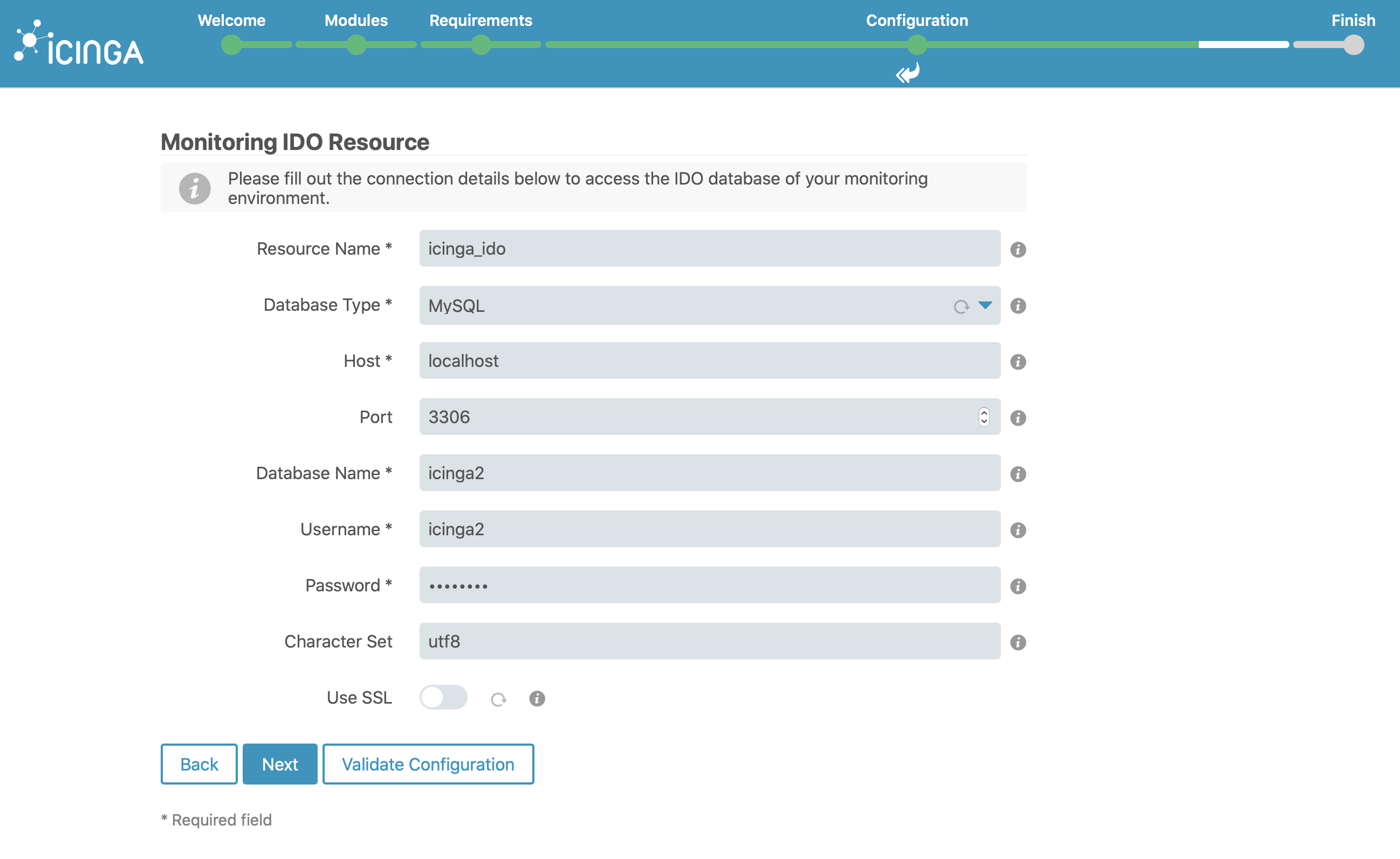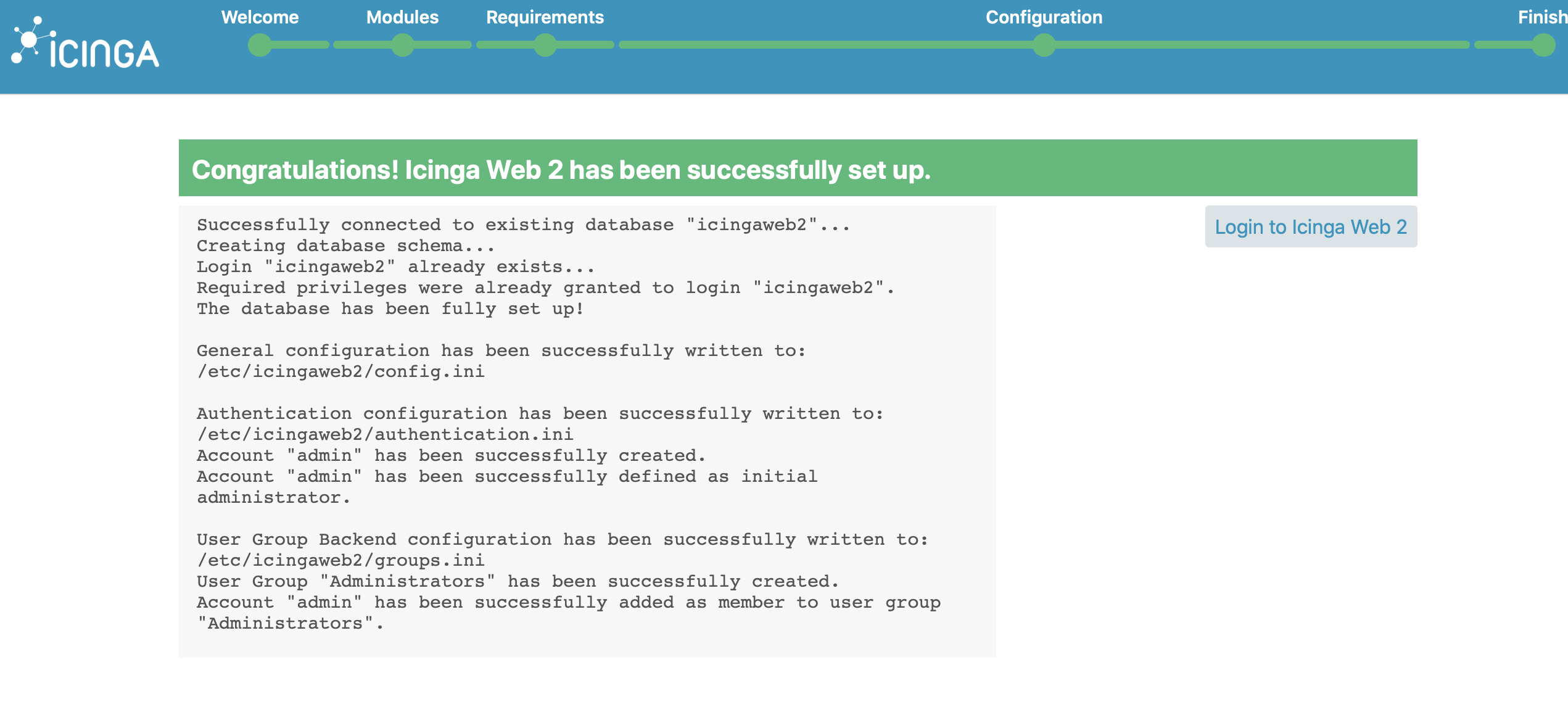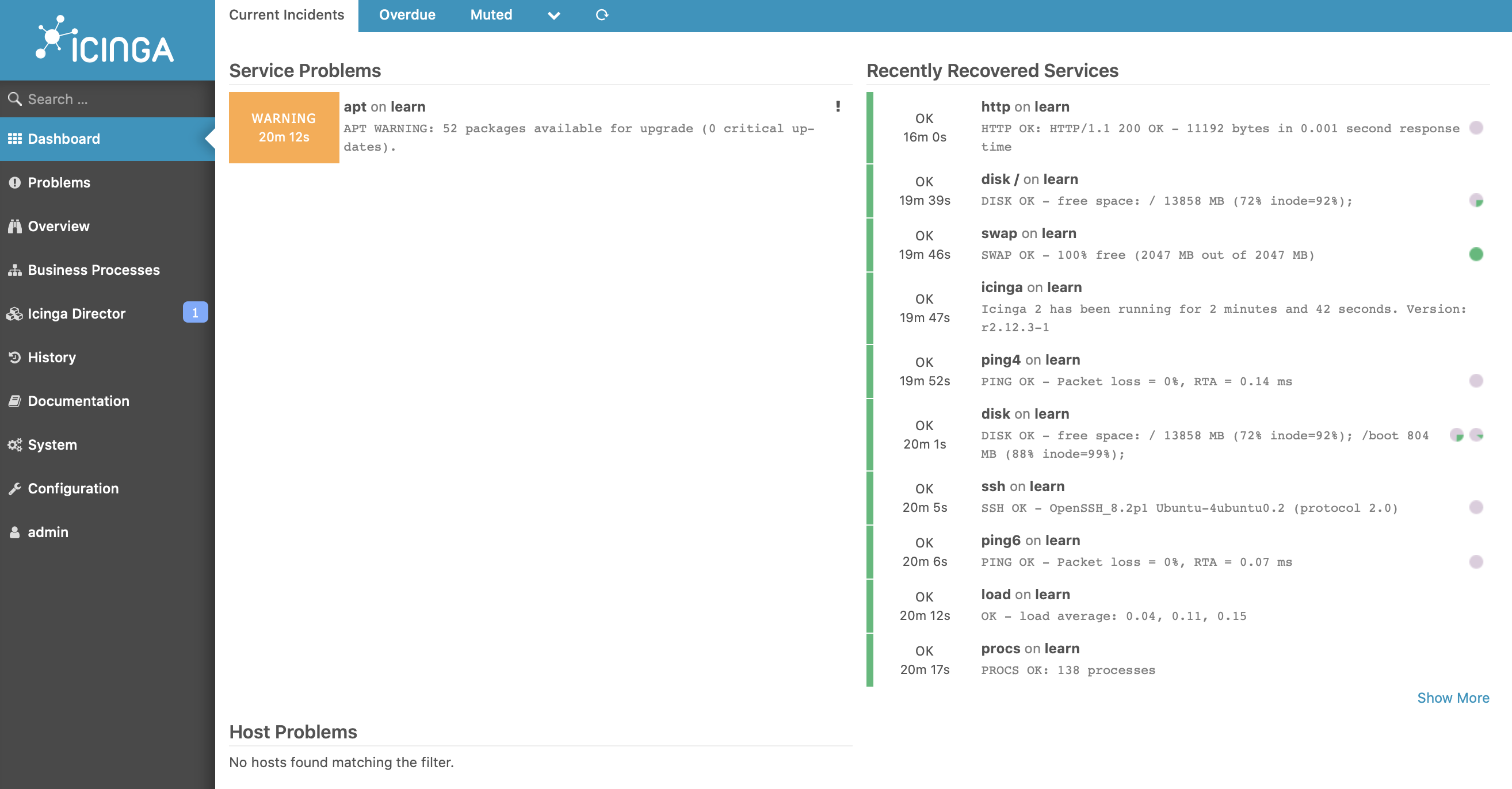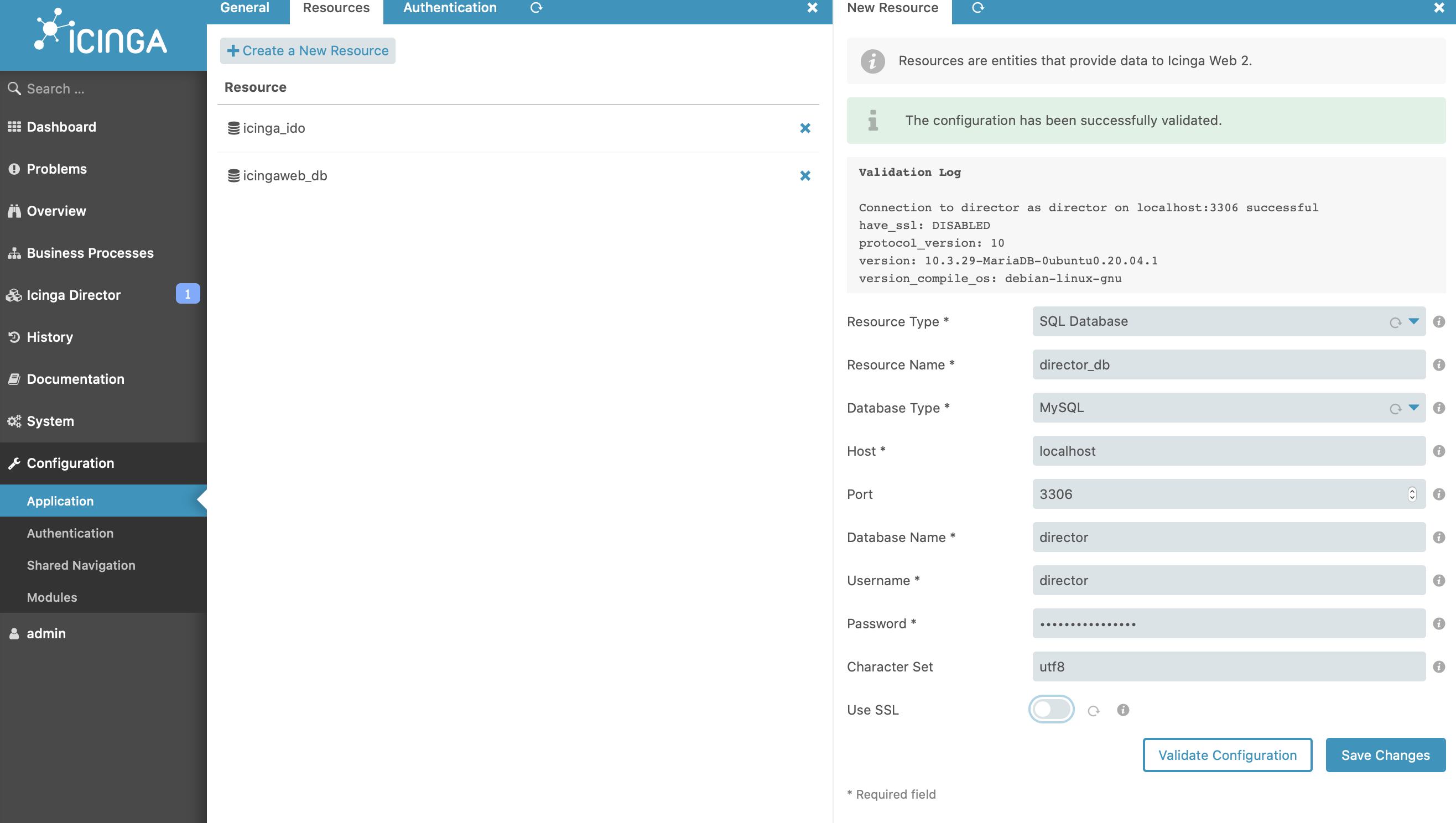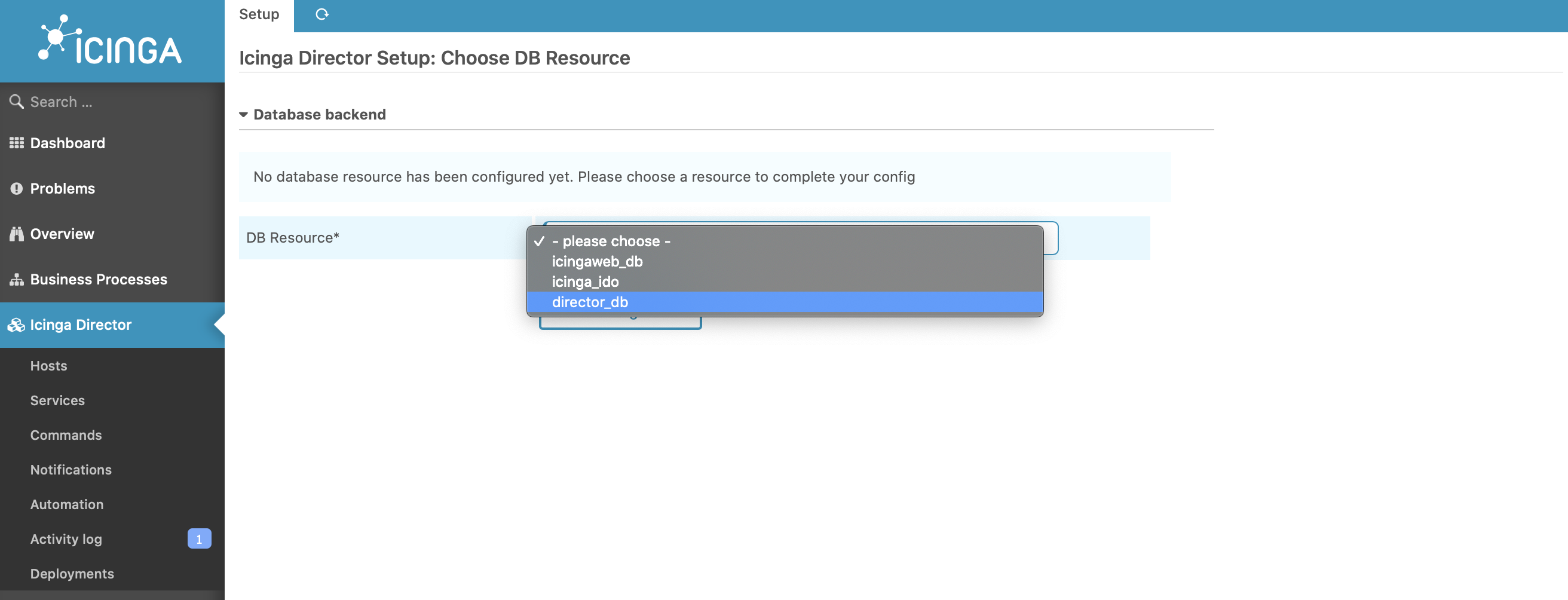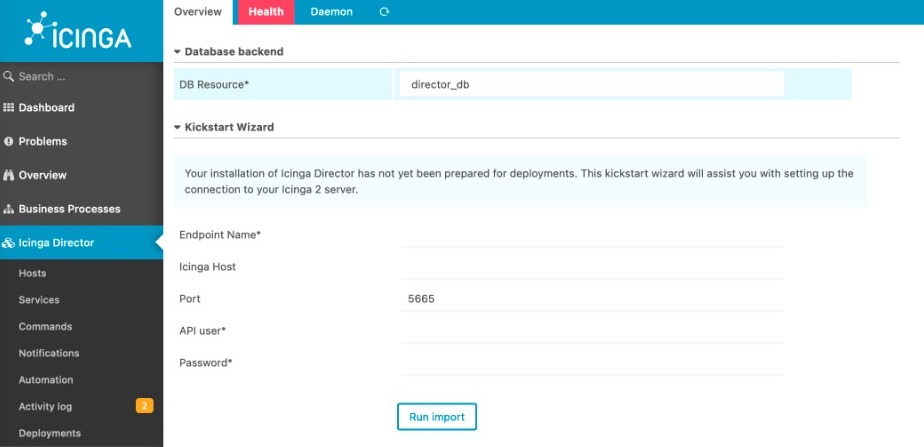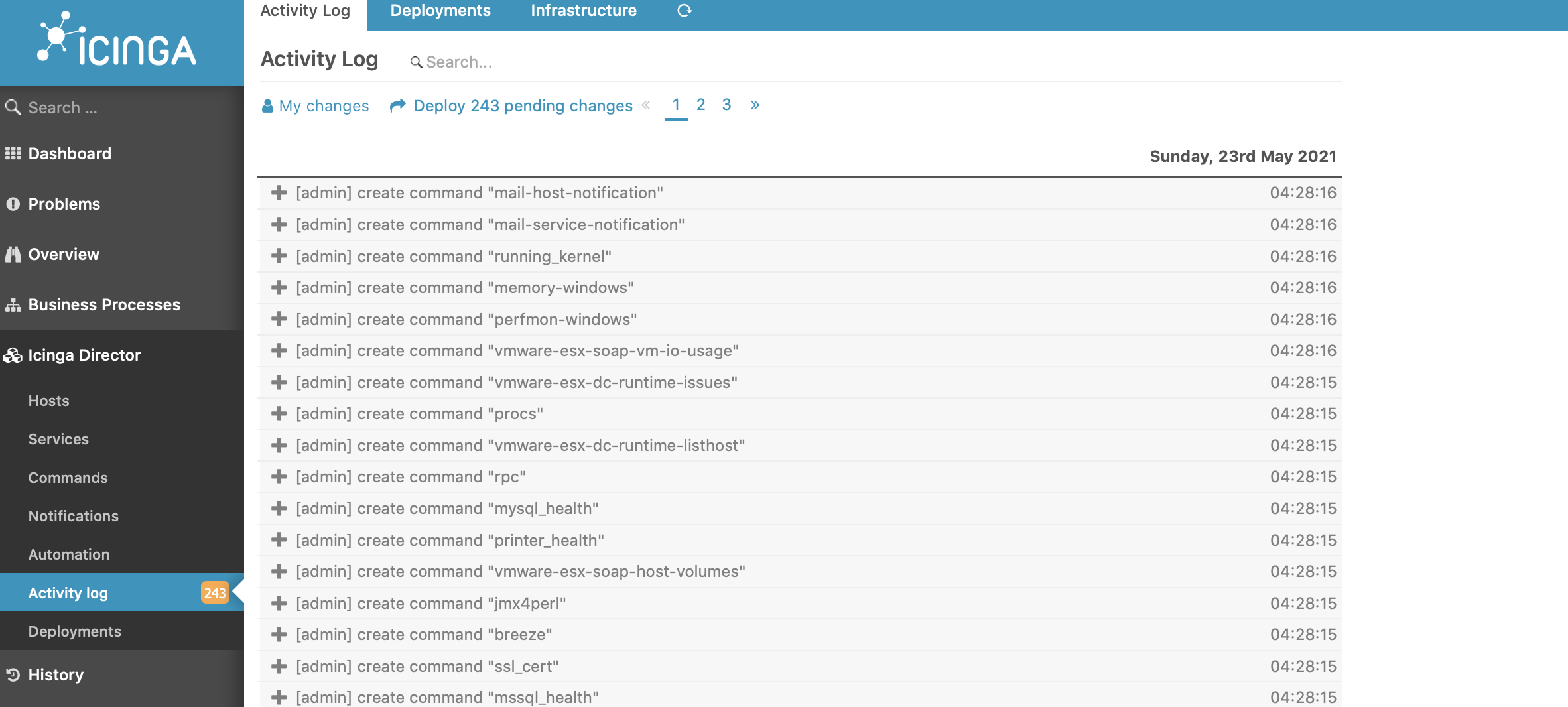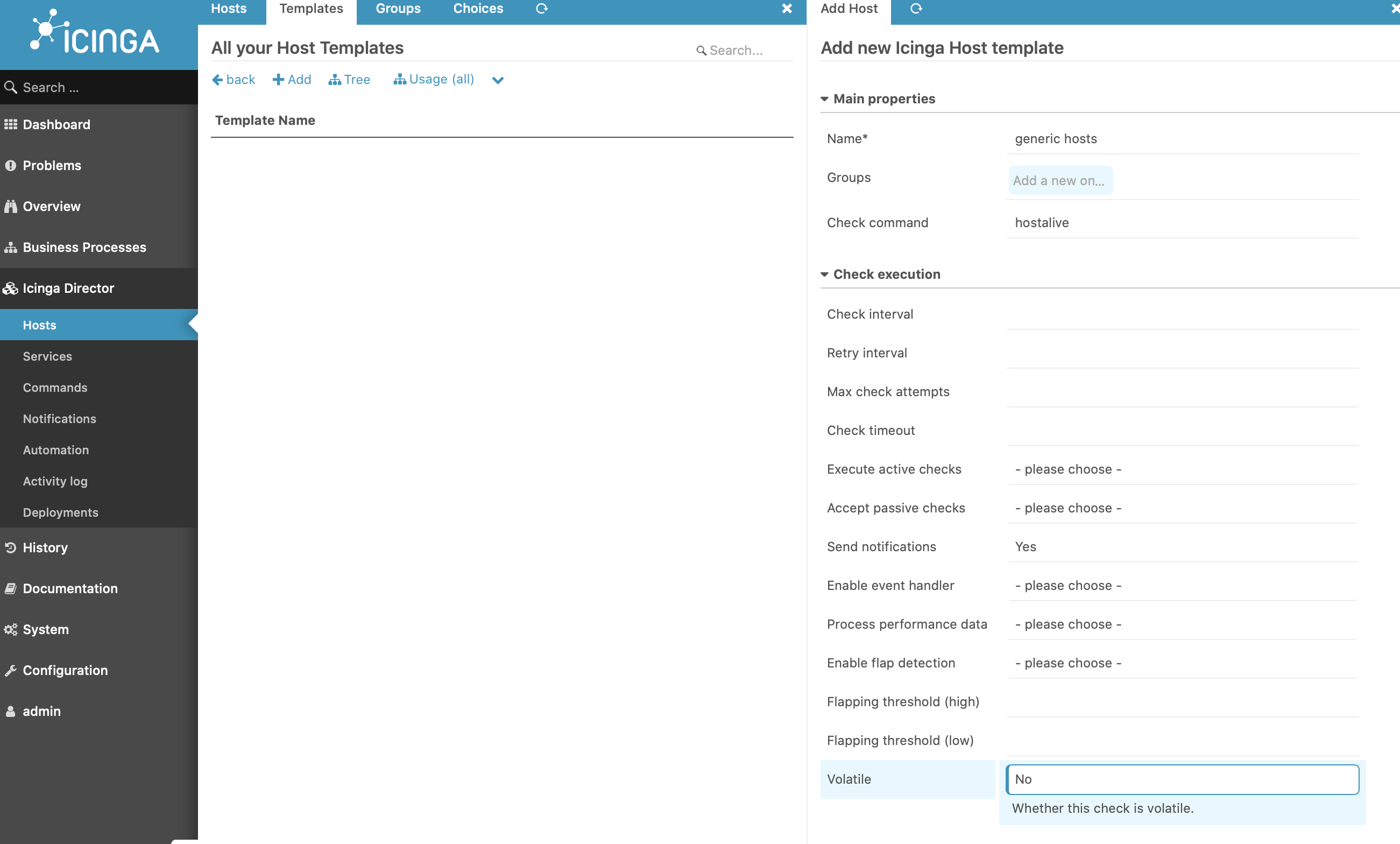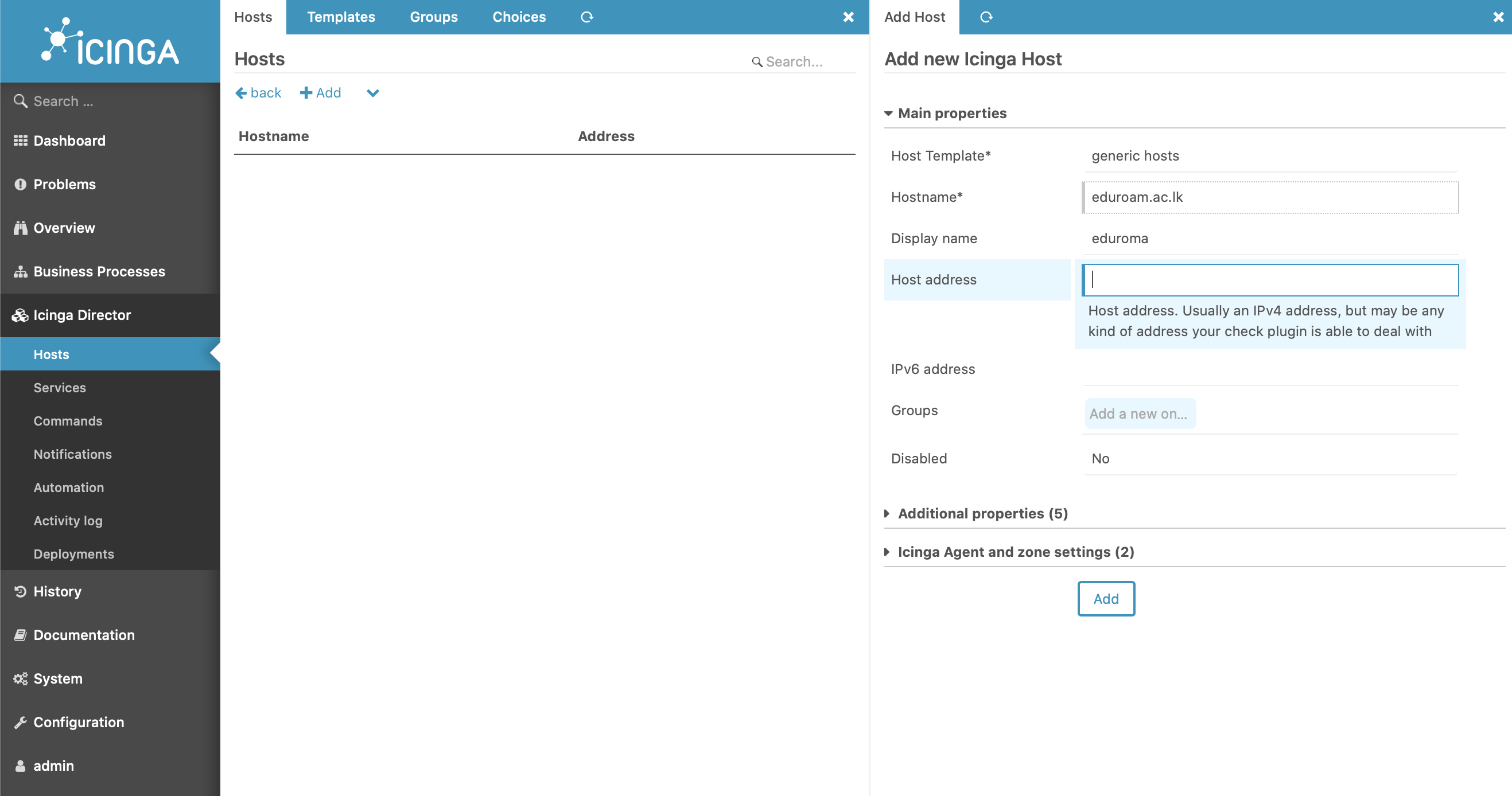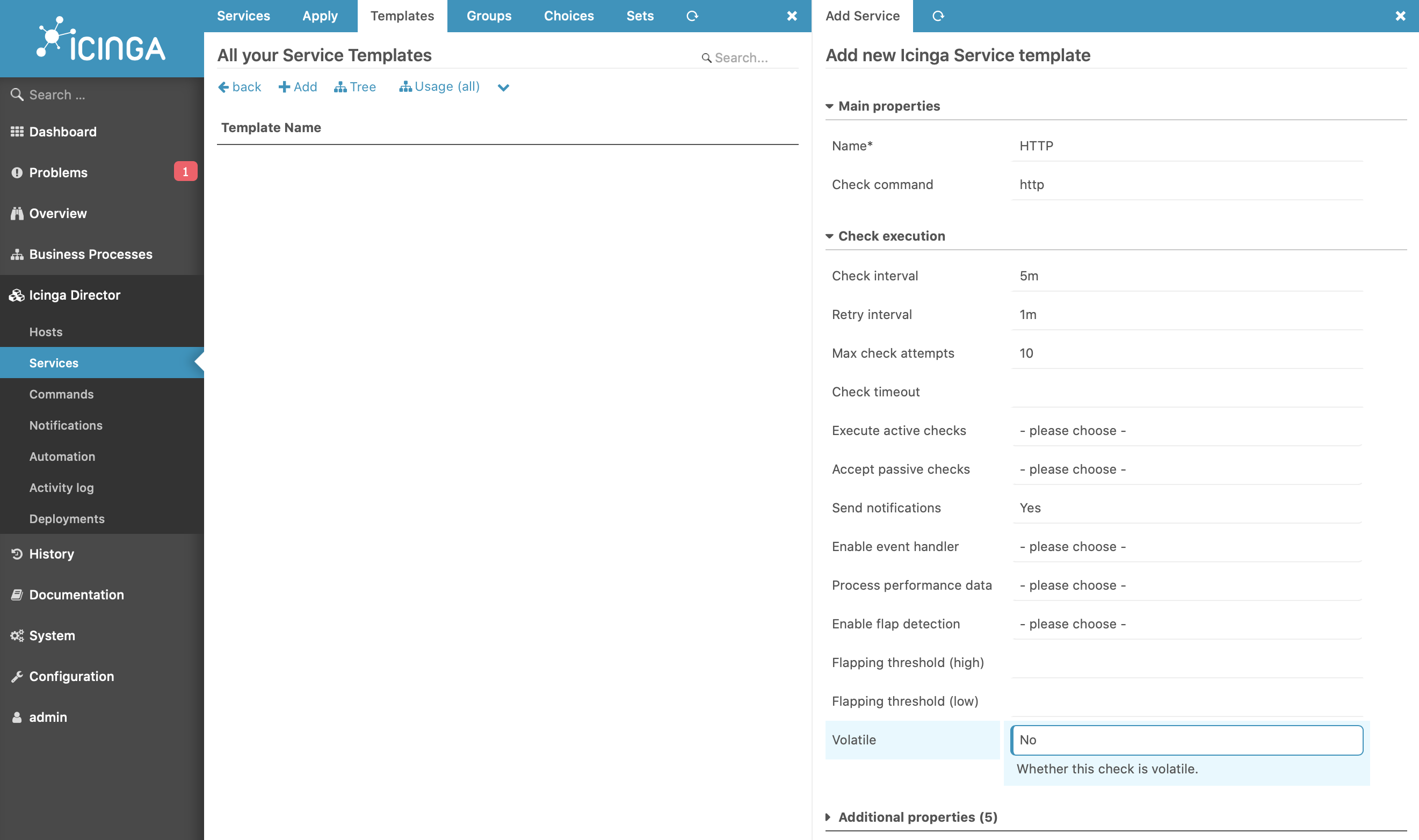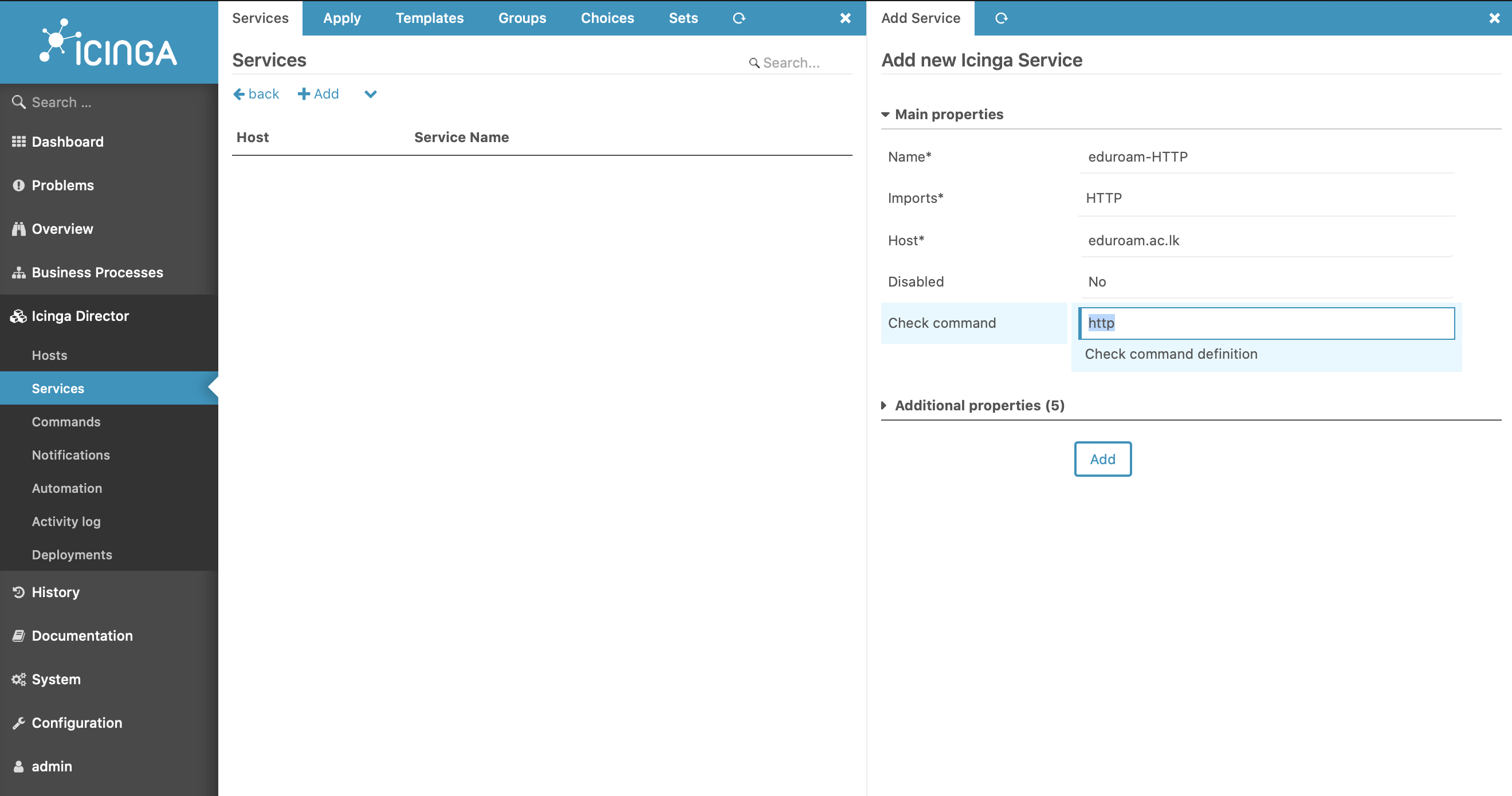| Version 20 (modified by , 4 years ago) ( diff ) |
|---|
Configuring iCinga2 on Single server
This will guide you through installing Icinga setup on Ubuntu 20.04 LTS server;
Requirements
- Linux Server running Ubuntu 20.04 LTS
- sudo access to the server. All following commands have to be entered as the root user. Best way to do it is, by login in as root with
sudo su
Execute the commands as super user
Installing using a Script
The Installation process of Icinga2 will be done using a script. Script includes,
- Installation of Icinga2, Icingaweb2 and relevant dependancies
- Installation of modules
- MariaDB installation
- Creating Databases
- Adding Api Users
Commands are executed as Superuser
1.Download the script into your server.
wget https://raw.githubusercontent.com/LEARN-LK/Tutorials/master/Scripts/ICINGA2/installing_icinga2_ubuntu.sh
2.Assign execute permission for the script
chmod +x installing_icinga2_ubuntu.sh
3.Then execute file using terminal
./installing_icinga2_ubuntu.sh
While the process is being executed, the configuration dialogs for icinga2-ido-mysql will be prompted. Select yes for the options as following images. Enter a password for when it prompt(It is used for icinga2 database)
Type password for the installation of icinga2-ido-mysql (This password will be used as icinga2 database password while icingaweb2 configurations)
After re-enter the password for confirmation when it prompts.
Configuration on web
You can set up Icinga Web 2 quickly and easily with the Icinga Web 2 setup wizard which is available the first time you visit Icinga Web 2 in your browser. When using the web setup you are required to authenticate using a token.
http://IP-ADDRESS/icingaweb2/setup
you can find the token by using the icingacli in terminal:
icingacli setup token show
Use the token to start configuration for icingaweb2
You can enable the modules needed by sliding bars and click Next:
In next page modules and the details are listed:
Use database as Authentication type:
As the icingaweb_db resource, please add icingaweb2 database details in Mysql. ()
You can find your database password for icingaweb2 user in /home/passwords.txt file
cat /home/passwords.txt
Enter Authentication backend as icingaweb2 for the system:
Next, Create a login user for the icingaweb2 portal:
Click next to proceed :
Change the database name to icinga2 :
Use the password you typed when the icinga-ido-mysql configurations while executing the installation script:
Enter the api-user details and you can find the details in /etc/icinga2/conf.d/api-users.conf file.
(If you get an error while validating api user, please restart the icinga service by systemctl restart icinga2 and retry):
Click next to proceed :
if the configurations are succeeded, following message is shown on the top, and click Login to icinga web 2 in the right side
Initial dashboard:
Setup Icinga Director Module
Icinga2 Director Module will allow you to do the configuration by webapp. Unless you have to do it from CLI. We have installed the module from our script.
Let's Initialise a resource for director module. Resources can be created using Configurations > Application > Resource like following image.
After creating resource for icinga director, select the created resource as follows:
If it asks API details,
- Put the hostname as endpoint
- host as local host
- API user details for director are in
/etc/icinga2/conf.d/api-users.conffile.
cat /etc/icinga2/conf.d/api-users.conf
After every deplyment, Please deploy by clicking Deploy pending changes on the top of the page :
Note : Click Deploy pending changes after every deployment attemp
Adding Hosts
Before adding hosts, the host templates have to be added. These templates should have the details on how host needs to be checked.
Add the hosts after adding host template:
Adding Services
Before adding services, the service templates has to be added,
After, services can be added as following as per requirements:
Following is the Manual Installation
If you have completed the scripted installation, do not proceed. ( This is for references )
Ubuntu Repositories
You need to add the Icinga repository to your package management configuration. The following commands must be executed with root permissions unless noted otherwise.
apt-get update
apt-get -y install apt-transport-https wget gnupg
wget -O - https://packages.icinga.com/icinga.key | apt-key add -
. /etc/os-release; if [ ! -z ${UBUNTU_CODENAME+x} ]; then DIST="${UBUNTU_CODENAME}"; else DIST="$(lsb_release -c| awk '{print $2}')"; fi;
echo "deb https://packages.icinga.com/ubuntu icinga-${DIST} main" > /etc/apt/sources.list.d/${DIST}-icinga.list
echo "deb-src https://packages.icinga.com/ubuntu icinga-${DIST} main" >> /etc/apt/sources.list.d/${DIST}-icinga.list
apt-get update
Installing Icinga 2
The following commands must be executed with root permissions unless noted otherwise.
apt-get install icinga2
Setting up Check Plugins
Without plugins Icinga 2 does not know how to check external services. The Monitoring Plugins Project provides an extensive set of plugins which can be used with Icinga 2 to check whether services are working properly.
apt-get install monitoring-plugins
Running Service
Start the service using following command
systemctl restart icinga2
Enabling the service if a reboot happens
systemctl enable icinga2
Extra :
If you’re stuck with configuration errors, you can manually invoke the configuration validation.
icinga2 daemon -C
Configuration Syntax Highlighting
If you are using Vim
apt-get install vim-icinga2 vim-addon-manager
vim-addon-manager -w install icinga2
Ensure that syntax highlighting is enabled e.g. by editing the user’s vimrc configuration file:
# vim ~/.vimrc
syntax on
Test it:
vim /etc/icinga2/conf.d/templates.conf
Note : If you are using Nano the syntax files are installed with the icinga2-common package already
Setting up Icinga Web 2
Configuring DB IDO MySQL
Installing MySQL database server
apt-get install mariadb-server
mysql_secure_installation
(After executing mysql_secure_installation, change the root password and remove test database.)
Installing the IDO modules for MySQL
The next step is to install the icinga2-ido-mysql
apt-get install icinga2-ido-mysql
Select yes for the options pop up and enter a password for when it prompt(it is used for icinga2 database)
Note :
(OPTIONAL)The Ubuntu packages provide a database configuration wizard by default. You can skip the automated setup and install/upgrade the database manually if you prefer.
Setting up the MySQL database
mysql -u root -p CREATE DATABASE icinga; CREATE USER 'icinga'@'localhost' IDENTIFIED BY '###PASSSWORD### ; GRANT SELECT, INSERT, UPDATE, DELETE, DROP, CREATE VIEW, INDEX, EXECUTE ON icinga.* TO 'icinga'@'localhost'; quit
After creating the database you can import the Icinga 2 IDO schema using the following command. Enter the root password into the prompt when asked.
mysql -u root -p icinga < /usr/share/icinga2-ido-mysql/schema/mysql.sql
Enabling the IDO MySQL module
The package provides a new configuration file that is installed in /etc/icinga2/features-available/ido-mysql.conf. (You can update the database credentials in this file if needed.)
You can enable the ido-mysql feature configuration file using icinga2 feature enable:
icinga2 feature enable ido-mysql
You will see Module 'ido-mysql' was enabled.
Make sure to restart Icinga 2 for these changes to take effect.
systemctl restart icinga2
Setting Up Icinga 2 REST API
Icinga Web 2 and other web interfaces require the REST API to send actions (reschedule check, etc.) and query object details.
You can run the CLI command icinga2 api setup to enable the api feature and set up certificates as well as a new API user root with an auto-generated password in the /etc/icinga2/conf.d/api-users.conf configuration file:
icinga2 api setup
Edit the api-users.conf file and add a new ApiUser object. Specify the permissions attribute with minimal permissions required by Icinga Web 2.
vim /etc/icinga2/conf.d/api-users.conf
object ApiUser "icingaweb2" {
password = "Wijsn8Z9eRs5E25d"
permissions = [ "status/query", "actions/*", "objects/modify/*", "objects/query/*" ]
}
(add an api user for the director as well)
Restart Icinga 2 to activate the configuration.
systemctl restart icinga2
Installing Icinga Web 2
apt-get install icingaweb2 libapache2-mod-php
Preparing Web Setup
You can set up Icinga Web 2 quickly and easily with the Icinga Web 2 setup wizard which is available the first time you visit Icinga Web 2 in your browser. When using the web setup you are required to authenticate using a token. In order to generate a token use the icingacli:
icingacli setup token create
In case you do not remember the token you can show it using the icingacli:
icingacli setup token show
On Debian and derivates, you need to manually create a database and a database user prior to starting the web wizard. This is due to local security restrictions whereas the web wizard cannot create a database/user through a local unix domain socket.
Database for backend use
log as root user
mysql -u root -p
then execute the following commands to create icingaweb db and director db
For icingaweb db ====
CREATE DATABASE icingaweb2; CREATE USER icingaweb2@localhost IDENTIFIED BY '##PASSWORD##'; GRANT ALL ON icingaweb2.* TO icingaweb2@localhost; Flush privileges; quit
director db
CREATE DATABASE director CHARACTER SET 'utf8'; CREATE USER director@localhost IDENTIFIED BY '##PASSWORD##'; GRANT ALL ON director.* TO director@localhost; Flush privileges; quit
enabling reactbundle module
Copy following script to a bash flle and execute or execute in the terminal.
REACTBUNDLE_MODULE_NAME=reactbundle
REACTBUNDLE_MODULE_VERSION=v0.9.0
REACTBUNDLE_REPO="https://github.com/Icinga/icingaweb2-module-${REACTBUNDLE_MODULE_NAME}"
MODULES_PATH="/usr/share/icingaweb2/modules"
git config --global advice.detachedHead false
git clone ${REACTBUNDLE_REPO} "${MODULES_PATH}/${REACTBUNDLE_MODULE_NAME}" --branch "${REACTBUNDLE_MODULE_VERSION}"
icingacli module enable "${REACTBUNDLE_MODULE_NAME}"
enabling ipl module
Copy following script to a bash flle and execute or execute in the terminal.
IPL_MODULE_NAME=ipl
IPL_MODULE_VERSION=v0.5.0
IPL_REPO="https://github.com/Icinga/icingaweb2-module-${IPL_MODULE_NAME}"
MODULES_PATH="/usr/share/icingaweb2/modules"
git clone ${IPL_REPO} "${MODULES_PATH}/${IPL_MODULE_NAME}" --branch "${IPL_MODULE_VERSION}"
icingacli module enable "${IPL_MODULE_NAME}"
enabling incubator module
Copy following script to a bash flle and execute or execute in the terminal.
INCUBATOR_MODULE_NAME=incubator
INCUBATOR_MODULE_VERSION=v0.6.0
INCUBATOR_REPO="https://github.com/Icinga/icingaweb2-module-${INCUBATOR_MODULE_NAME}"
MODULES_PATH="/usr/share/icingaweb2/modules"
git clone ${INCUBATOR_REPO} "${MODULES_PATH}/${INCUBATOR_MODULE_NAME}" --branch "${INCUBATOR_MODULE_VERSION}"
icingacli module enable "${INCUBATOR_MODULE_NAME}"
Enabling Director in Icinga
Copy following script to a bash flle and execute. The script with the files to the relevant directory using the script
ICINGAWEB_MODULEPATH="/usr/share/icingaweb2/modules"
REPO_URL="https://github.com/icinga/icingaweb2-module-director"
TARGET_DIR="${ICINGAWEB_MODULEPATH}/director"
MODULE_VERSION="1.8.0"
git clone "${REPO_URL}" "${TARGET_DIR}" --branch v${MODULE_VERSION}
and then enable the icinga-director module
icingacli module enable director
enabling business process module
Copy following script to a bash flle and execute or execute in the terminal.
BS_PROCESS_ICINGAWEB_MODULEPATH="/usr/share/icingaweb2/modules"
BS_PROCESS_REPO_URL="https://github.com/Icinga/icingaweb2-module-businessprocess"
BS_PROCESS_TARGET_DIR="${ICINGAWEB_MODULEPATH}/businessprocess"
git clone "${BS_PROCESS_REPO_URL}" "${BS_PROCESS_TARGET_DIR}"
icingacli module enable businessprocess
changing the permission for relevant users
chown -R www-data:icingaweb2 /etc/icingaweb2/
Running a demon for director service
useradd -r -g icingaweb2 -d /var/lib/icingadirector -s /bin/false icingadirector
apt install -d -o icingadirector -g icingaweb2 -m 0750 /var/lib/icingadirector
MODULE_PATH=/usr/share/icingaweb2/modules/director
cp "${MODULE_PATH}/contrib/systemd/icinga-director.service" /etc/systemd/system/
systemctl daemon-reload
systemctl enable icinga-director.service
systemctl start icinga-director.service
Attachments (28)
- ido1.jpg (176.7 KB ) - added by 4 years ago.
- idoconfig2.png (314.8 KB ) - added by 4 years ago.
- idoconfig4.png (110.7 KB ) - added by 4 years ago.
- idoconfig_password3.png (178.7 KB ) - added by 4 years ago.
- wensetup5.png (321.9 KB ) - added by 4 years ago.
- mdulelist7.png (539.0 KB ) - added by 4 years ago.
- selectingmodules6.png (383.4 KB ) - added by 4 years ago.
- requirements8.png (125.4 KB ) - added by 4 years ago.
- icingaweb_db_respurce9.png (273.7 KB ) - added by 4 years ago.
- icingaweb_db_respurce9.2.png (273.7 KB ) - added by 4 years ago.
- authenticationbackend10.png (128.6 KB ) - added by 4 years ago.
- creatingadmininstratoraccount11.png (141.9 KB ) - added by 4 years ago.
- applicationconfiguration12.png (251.5 KB ) - added by 4 years ago.
- monitoringbackekend15.png (133.1 KB ) - added by 4 years ago.
- idoresource16.png (241.7 KB ) - added by 4 years ago.
- apiuser17.png (194.9 KB ) - added by 4 years ago.
- monitoringsecurity18.png (117.7 KB ) - added by 4 years ago.
- success20.png (257.7 KB ) - added by 4 years ago.
- initialdashboard22.png (358.6 KB ) - added by 4 years ago.
- addingresources24.png (342.4 KB ) - added by 4 years ago.
- config_source_fordirector25.png (293.9 KB ) - added by 4 years ago.
- deplypending_changes26.png (313.2 KB ) - added by 4 years ago.
- host_template28.png (318.5 KB ) - added by 4 years ago.
- add_hosts30.png (242.2 KB ) - added by 4 years ago.
- service_template32.png (285.1 KB ) - added by 4 years ago.
- service33.png (213.5 KB ) - added by 4 years ago.
- director.jpeg (48.9 KB ) - added by 4 years ago.
- Screenshot 2021-05-24 at 00.04.46.png (220.4 KB ) - added by 4 years ago.

